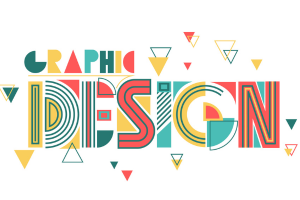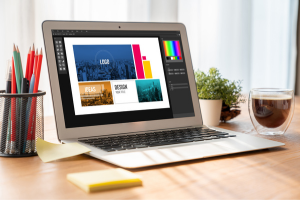In a speedier digital world, merely owning a website is insufficient. A website must be functional, meaningful, and easy to use. User Experience Design (UX Design) is central to modern website development in this regard. Businesses that put effort into UX designs will be able to fulfill their goals of attracting visitors, holding those visitors captive, and converting them into loyal customers.
Today, we are going to discuss what user experience design is, why it is very important for developing websites, and how that will affect success in business in this day and age.
What Is User Experience Design?
User Experience Design is the practice of improving the process through which an individual interacts with a site in order for that individual to be satisfied with the site as a whole. UX design practices involve developing the factors affecting user behavior-for example, needs, wants, experiences, or anything else potentially important for shaping the user’s entire environment.
It’s not about making a pretty website; it’s about every bit of content, navigation, layout, functionality-all the little things that come together to create an experience-they need to work harmoniously to provide an experience.
Why User Experience Design Matters in Website Development
Modern website development tends to go beyond coding and aesthetics. Here are some reasons why User Experience Design is very important:
1. Improves User Satisfaction
Easy navigation and fast delivery of information will greatly please users’ website. Those satisfied users would spend more time on your site to learn more about what you offer and will perform desired actions, such as making a purchase or filling out a contact form.
2. Boosts Conversion Rates
Effective User Experience Design eliminates most friction points along a user’s visit. Clear Call to Action buttons, effortless checkout processes, and intuitive navigation paths will stir users into action, convert them into leads or customers.
3. Enhances SEO Performance
According to Google, part of considering the experience given to users includes ranking sites. Fast-load and low-bounce rates, which are all key elements of UX design, translate into improved search rankings.
4. Accountable for Building Trust in Brands
A professional and user-oriented site design builds trust and credibility. Users are drawn more to a site that feels reliable as well as intuitive.
Key Elements of User Experience Design in Website Development
There are several principles that lay the groundwork for effective UX design. The introduction of the core elements follows:
1. User Research and Development of Persona
Understanding the target audience before making a website involves user research and the development of user personas and user flows. This includes finding out what guests like and dislike, their pain points, and behavior patterns to create user personas in detail to guide designers in making specific decisions whose design benefits a specific audience segment.
2. Information Architecture (IA)
Information Architecture includes the Organization of Content and Its Structure. A Good IA Will Allow Users To Easily Find What They Are Looking For Without Getting Confused Or Frustrated.
3. Wireframe Prototyping
Wireframes outline how your site layout looks, while prototypes give you a chance to test interactions before full development. Well, in this part, designers can logically visualize user flows and optimize usability early in the project.
4. Responsive Mobile First Designs
With the increase of users accessing sites from mobile devices, the Design of User Experience should go responsive first. It creates a flawless site on any screen size and for every device.
5. Visual Design and Consistency
While UX deals with utilitarian purposes, visual design ensures that the site is pleasing to the eye. Fonts, color schemes, button styles, and imagery should contribute to a unified user experience.
6. Speed Optimization of the Site
Page load speed affects user satisfaction more than it does SEO. UX designers get involved with developers during optimizing image sizes, minimizing scripts, and utilizing caching strategies for faster load times.
7. Clear Call-to-Actions (CTAs)
Good design will place CTAs in the areas that will let users flow to the actions needed-whether it is a purchase, newsletter sign-up, or contact to your business.
The Relationship Between UX Design and SEO
Most business owners think that there is no connection between User Experience design and SEO. There are better ways in which UX improvements can lead to organic search performance. Some of them are:
Lower Bounce Rates-The more user-friendly the site is, the more time people spend on it, giving the signal of quality to the search engines.
Faster Load Times-This is one of the cardinal factors of efficient UX, but it also contributes to page ranking.
Mobile Friendliness-Google has given priority to sites optimized for mobile in its search output.
Better Navigation-Clear site architectures help both users and crawlers.
Focusing more on UX design does more than improving user satisfaction; it builds SEO-friendly websites.
How User Experience Design Impacts Different Stages of Website Development
User Experience design is never a one-time task; it’s always present in the horizontal development of the website:
1. Planning Stage
During this planning phase, UX designers collect audience research through competitive analysis, then map out the user journey. This will inform the overall website strategy, along with defining project goals.
2. Design Stage
Wireframes guided by UX principles will eventually follow this layout. These flow and visual hierarchy for interactive design will be fine-tuned to improve usability.
3. Development Stage
They usually work collaboratively with UX designers to ensure the functionality works according to design requirements. The responsive design frameworks are then applied, and coding is optimized while including the accessibility features.
4. Testing and Optimization
Such as A/B testing, heatmap analysis, and performance tracking, to improve based on solid data.
5. Post-Launch Monitoring
UX will not end when the site goes live. Continuous analysis of user behavior would help point out aspects where further improvements can still be made in ensuring that the site still provides favorable user experiences.
Common UX Mistakes Businesses Should Avoid
There are common mistakes made by many businesses while implementing User Experience Design that could have been avoided, and which will hurt their website performance:
Overcomplicated Navigation: Users should be able to find the information for which they are searching within two or three clicks max.
Ignoring Mobile Optimization: Desktop Only: This could kill your mobile users.
Slow Page Load Times: This is one of the most important areas in User Experience.
Lack of Clear CTAs: If your users do not know the next steps to take, they could very well leave your site without converting.
Inaccessible Design: It could also limit your reach to potential audiences and possibly lead to legal trouble.
Companies can find many ways to enhance user experience by fixing these errors.
Real-World Examples of Good User Experience Design
Here are samples of brands that represent good User Experience Design:
Apple
Apple is known for simple design with intuitive navigation; thus, the website provides a smooth experience while browsing on any and all devices.
Airbnb
Airbnb creates a smooth booking process for customers with large images, simple navigation, and quickly loading pages.
Amazon
Accentuating personalization in Amazon,” fast load times,” and “clear CTAs,” makes the shopping experience easy and enjoyable for users.
Future Trends in User Experience Design
In line with the evolving trends, these are the trends in UX that will shape the future of websites:
Voice User Interfaces (VUIs): The growing trend among websites is incorporating voice search and command operations.
Artificial Intelligence Personalized Experience: The journey of users would be personalized by making use of AI-driven content and design personalization.
Micro-Interaction: Animation that is short in form, providing feedback and directing users through some tasks.
AR Experiences: It will have augmented online shopping as well as product showcasing.
Sustainable UX: An energy-efficient and low-carbon design choice will likely grow in importance.
Each of these trends is essential in informing an organization towards future-proofing its website.
Conclusion
The modern world is such that User Experience Design has become rather a must when developing a website; this is required. A site such as this will attract many visitors, engage them, convert them, and secure a good brand impression.
Having sound User Experience Design principles in the process of developing a website will create an online identity platform for increased growth in business over time.






